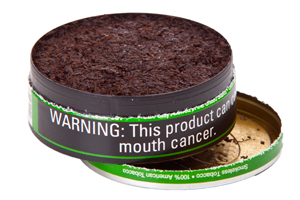
Tobacco use is the leading cause of preventable illness and death in the United States. It causes many different cancers as well as chronic lung diseases such as emphysema and bronchitis, heart disease, pregnancy-related problems, and many other serious health problems.
– Who smokes?
– Why is smoking harmful to smokers?
– Why is smoking harmful to non-smokers?
– Who uses smokeless tobacco?
– How is smokeless tobacco harmful?
Who smokes?
– Each day, more than 3,200 people under 18 smoke their first cigarette, and approximately 2,100 youth and young adults become daily smokers.
– 9 out of 10 smokers start before the age of 18, and 98% start smoking by age 26.
– 1 in 5 adults and teenagers smoke.
– In 2011, an estimated 19% of U.S. adults were cigarette smokers.
– Approximately 18% of high school students smoke cigarettes.
– In 2011, nearly 18% of high school boys were current cigar users.
– From 1964 to 2014, the proportion of adult smokers declined from 42.0% to 18.0%.
Why is smoking harmful to smokers?
General Health
– More than 16 million people already have at least one disease from smoking.
– More than 20 million Americans have died because of smoking since 1964, including approximately 2.5 million deaths due to exposure to secondhand smoke.
– 8.6 million people live with a serious illness caused by smoking.
– On average, smokers die 13 to 14 years earlier than nonsmokers.
Respiratory Health
– Nearly 9 out of 10 lung cancers are caused by smoking. Smokers today are much more likely to develop lung cancer than smokers were in 1964.
– Nearly 8 out of 10 COPD (Chronic Obstructive Pulmonary Disease) deaths are a result of smoking. Currently, there is no cure for COPD.
– Women smokers are up to 40 times more likely to develop COPD (Chronic Obstructive Pulmonary Disease) than women who have never smoked.
– Smoking increases a person’s risk of getting tuberculosis and dying from it.
– More than 11% of high school students in the United States have asthma, and studies suggest that youth who smoke are more likely to develop asthma.
– Smoking slows down lung growth in children and teens.
– Lung cancer is the leading cause of cancer death among both men and women in the United States, and 90% of lung cancer deaths among men and approximately 80% of lung cancer deaths among women are due to smoking.
Cancer
– Smoking causes many other types of cancer, including cancers of the throat, mouth, nasal cavity, esophagus, stomach, pancreas, kidney, bladder, and cervix, as well as acute myeloid leukemia.
– Men with prostate cancer who smoke may be more likely to die from the disease than nonsmokers.
Children
5.6 million children alive today will ultimately die early from smoking. That is equal to 1 child out of every 13 alive in the U.S. today.
Diabetes
Smokers are 30% to 40% more likely to develop type 2 diabetes than nonsmokers.
Fertility
18 million males over age 20 suffer from erectile dysfunction (ED). Smoking is a cause of ED, as cigarette smoke alters blood flow necessary for an erection.
Why is smoking harmful to others?
General Population
– An estimated 88 million nonsmoking Americans, including 54% of children aged 3–11 years, are exposed to secondhand smoke.
– Each year, primarily because of exposure to secondhand smoke, an estimated 3,000 nonsmoking Americans die of lung cancer,
– Nonsmokers who are exposed to secondhand smoke at home or work increase their lung cancer risk by 20–30%.
– Nonsmokers who are exposed to secondhand smoke at home or work increase their heart disease risk by 25–30%.
– More than 33,000 nonsmokers die every year in the United States from coronary heart disease caused by exposure to secondhand smoke.
Babies
– More than 100,000 of the smoking-caused deaths over the last 50 years were of babies who died from SIDS.
– More than 400,000 babies born in the U.S. every year are exposed to chemicals in cigarette smoke before birth, because their mothers smoke.
– In babies aged 18 months and younger in the United States, secondhand smoke exposure is responsible for:
– 150,000–300,000 new cases of bronchitis and pneumonia annually
– Approximately 7,500–15,000 hospitalizations annually
– Babies who breathe secondhand smoke are sick more often with bronchitis, pneumonia, and ear infections.
Children
Children are at particular risk for exposure to secondhand smoke: 53.6% of young children (aged 3–11 years) were exposed to secondhand smoke in 2007–2008.
While only 5.4% of adult nonsmokers in the United States lived with someone who smoked inside their home, 18.2% of children (aged 3–11 years) lived with someone who smoked inside their home in 2007–2008.
In children, secondhand smoke causes:
– Ear infections
– More frequent and severe asthma attacks
– Respiratory issues, including coughing, sneezing, and shortness of breath
– Respiratory infections, including bronchitis and pneumonia
– An increased risk of sudden infant death syndrome (SIDS)
Smokeless Tobacco
Smokeless tobacco is tobacco that is not burned. It is also known as chewing tobacco, oral tobacco, spit or spitting tobacco, dip, chew, and snuff. Most people chew or suck (dip) the tobacco in their mouth and spit out the tobacco juices that build up, although “spitless” smokeless tobacco has also been developed.

Who uses smokeless tobacco?
15% of high school boys use smokeless tobacco, and an estimated 9% of all high school students use smokeless tobacco.
3.5% of all adults use smokeless tobacco.
Among the 50 states and DC, smokeless tobacco use was highest in Wyoming (9.1%), West Virginia (8.5%), and Mississippi (7.5%).
In all 50 states and DC, smokeless tobacco use was significantly higher among men than women; smokeless tobacco use among men ranged from 2.0% (DC) to 17.1% (West Virginia).
Data suggests that men, young adults (aged 18–24 years), and those with a high school education or less are more likely to use smokeless tobacco.
How is smokeless tobacco harmful?
Smokeless tobacco contains 28 cancer-causing agents (carcinogens).
Smokeless tobacco is a known cause of cancer; it causes oral and pancreatic cancer.
Smokeless tobacco is also strongly associated with leukoplakia—a precancerous lesion of the soft tissue in the mouth that consists of a white patch or plaque that cannot be scraped off.
Smokeless tobacco is associated with recession of the gums, gum disease, and tooth decay.
Smokeless tobacco use during pregnancy increases the risks for preeclampsia (i.e., a condition that may include high blood pressure, fluid retention, and swelling), premature birth, and low birth weight.
Smokeless tobacco use by men causes reduced sperm count and abnormal sperm cells.
Smokeless tobacco contains nicotine, and using it leads to nicotine addiction and dependence.
Adolescents who use smokeless tobacco are more likely to become cigarette smokers.